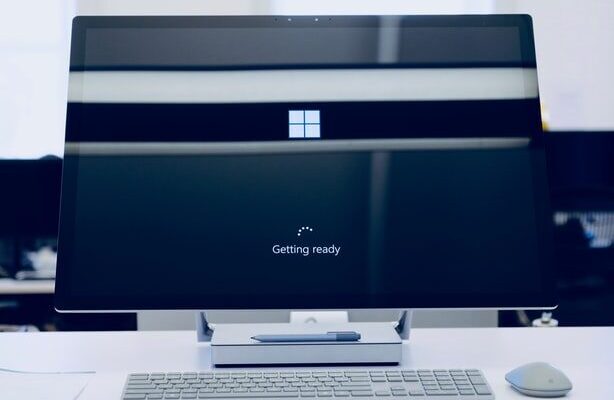My first order on www.dell.co.in
The Covid situation forced educational institutes to adopt & make everyday use of digital extensively. One can say it’s rather out of sheer compulsion. On the other hand, there was an unprecedented demand for laptops and desktops as a result of the digitization of teaching. I was among the thousands or lakhs of parents who scrambled to secure a good configuration laptop for their children.
My first order on Dell.co.in was amazingly smooth and equally surprising as well on the number of customization options available.
So can the commercial success of Dell be attributed to the customization front? The answer is Yes and No. Dell is one of the companies that has pioneered the “Just in Time” delivery model for operational efficiency and its buy direct formula is a win-win for all.
These 3 factors taken together form a strong base for the success of Dell: availability of extensive customization, Just in Time delivery model, and buy direct formula.
Read: Digital Transformation has changed the fate of Domino’s. How?
So what is Just in Time delivery model?
Just in Time (JIT) in simple terms means just the right inventory in the right quantity to ensure that there is just enough time for production and delivery. Its simple aim is to reduce the response time in the production system for maximum process efficiency.
It means achieving the highest levels of operational efficiency through inventory control. JIT is an inventory production strategy term relating to the manufacturing sector. It was invented in the 1960s in Japan as a response to its growing economic crises post World World II.
It however became famous when Toyota company adopted it widely and achieved rich economic benefits as of pioneering the strategy. The implementation of JIT and subsequent improvement to it through best practices makes Toyota’s name synonymous with JIT. It’s also the Toyota Production System.
Many good American companies have respect for individuals, and practice Kaizen and other TPS {Toyota Production System} tools. But what is important is having all of the elements together as a system. It must be practiced every day in a very consistent manner–not in spurts–in a concrete way on the shop floor.
Fujio Cho, honorary chairman of Toyota Motor Corporation
The beginning of Just In Time at Dell
In the initial years, Dell was largely focused on corporate business. And this is one of the key reasons we see Dell dominate a large number of corporate users. Not only for laptops and desktops but its other hardware and software product offerings in the enterprise space.
While it was deliberately not focusing very hard on the low margin customer market business, apparently it was gaining a reputation for itself in the customer market. For having built powerful machines which were so good that they satisfied the needs of even the 2nd hand and 3rd hand users.
The onset of the Internet era– Just before the time when the widespread commercial use of the internet was done, Dell was one of the first few to plunge into the e-commerce segment. Dell was able to offer its catalog of products on its website beginning 1996 / 1997.
The power of customization– Dell started offering the computer savvy users the power to order their computers and laptops based on their own customization and delivering them directly.
Buy Direct– Dell had the early mover advantage of offering end customers the option to buy directly from the company. A practice which the company specializes in and one which could impact its prices in a positive manner thereby benefitting both the company and the end customer. Its products appeared discounted as compared to the other products in the market whereas the truth was that they were priced in a way so they could pass the benefits of “Buy Direct”.
Dell Pioneering the Just in Time and Buy Direct Model
Dell was arguably the first in the computer hardware industry to implement Just in Time model. It focused on a combination of “push” and “pull” strategy; together popularly known as a push-pull strategy.
A push strategy is active when the customer visits the web to select the product and the various customizations available to it, thus creating a “Push” of products/options. On the placement of the order, immediately, a “Pull” is created, thereby creating demand and thus begins the process of production of the selected product.
The big advantage of Buy Direct and JIT implementation was that Dell could put in place some high-level programs and algorithms, which helped it predict to a great accuracy what volume of orders are expected, for which product, from where and thus it alerted its component suppliers to get ready with the anticipated parts while it also internally got staffed to be able to fulfill the predicted orders.
Basically, the loads of information it had collected over the years helped Dell learn and predict the customers’ buying patterns better. Although it is not officially disclosed by Dell as per industry experts, it is said that Dell’s forecast accuracy was north of 80%.
The Just in Time Model also meant that Dell was able to offer its customers the latest of the technology available in the market. Usually, in a typical retail store, the products are shipped with a pre-defined configuration. But because of Dell’s Just in Time system of ordering system, it could get its customers the latest technology in the market by ensuring that the latest products are supplied to it by its component supplier. They were able to bring new product offerings, almost at the same speed as technology advancement.
Cash in hand
One of the other benefits of the Buy Direct program of Dell was the cash at hand. Customers buying directly from Dell paid via credit card which generally gets converted into cash at the most on the 2nd or the 3rd day of the transaction. Whereas it enjoys a good 45 day credit period from its suppliers, this led to Dell being a cash-rich company.
Does Dell only operate via buy direct?
Like all major manufacturers and retailers across industry verticals, Dell also has omnichannel sales & marketing strategies in place. Thus, one can find Dell products with-
- Dell Authorised Resellers & Service Centers– Yes, not only the reseller but even many of the service centers also displays its leading retail products on display for sale. However, it is worth noting that the products available at stores would more often than not be exclusive for the stores and not available as a part of its offering on its own website.
- E-Commerce websites and Major Electronic re-sellers– You can also find Dell products on various e-commerce channels like the Amazons of the world. And you would also find Dell products being sold at white good consumer product re-sellers like Croma, Reliance Digital, Vijay Sales…to name a few. Again, it should be noted that the product offering on these channels differs from their own online offering.
Along with its Just in Time strategy, Dell’s massive success can be attributed to its creation of a blue ocean in a highly competitive industry by simply creating a new purchase and delivery system for buyers. So much so this family of business (by the way Dell is much more than Laptops) has clocked in annual revenue of $90 billion in 2019. I will end this story with a speech from legendry Michael Dell himself.
Interested in reading our Advanced Strategy Stories. Check out our collection.
Also check out our most loved stories below

IKEA- The new master of Glocalization in India?
IKEA is a global giant. But for India the brand modified its business strategies. The adaptation strategy by a global brand is called Glocalization

Why do some companies succeed consistently while others fail?
What is Adjacency Expansion strategy? How Nike has used it over the decades to outperform its competition and venture into segments other than shoes?

Nike doesn’t sell shoes. It sells an idea!!
Nike has built one of the most powerful brands in the world through its benefit based marketing strategy. What is this strategy and how Nike has used it?

Domino’s is not a pizza delivery company. What is it then?
How one step towards digital transformation completely changed the brand perception of Domino’s from a pizza delivery company to a technology company?

Why does Tesla’s Zero Dollar Budget Marketing work?
Touted as the most valuable car company in the world, Tesla firmly sticks to its zero dollar marketing. Then what is Tesla’s marketing strategy?

Microsoft – How to Be Cool by Making Others Cool
Microsoft CEO Satya Nadella said, “You join here, not to be cool, but to make others cool.” We decode the strategy powered by this statement.

















